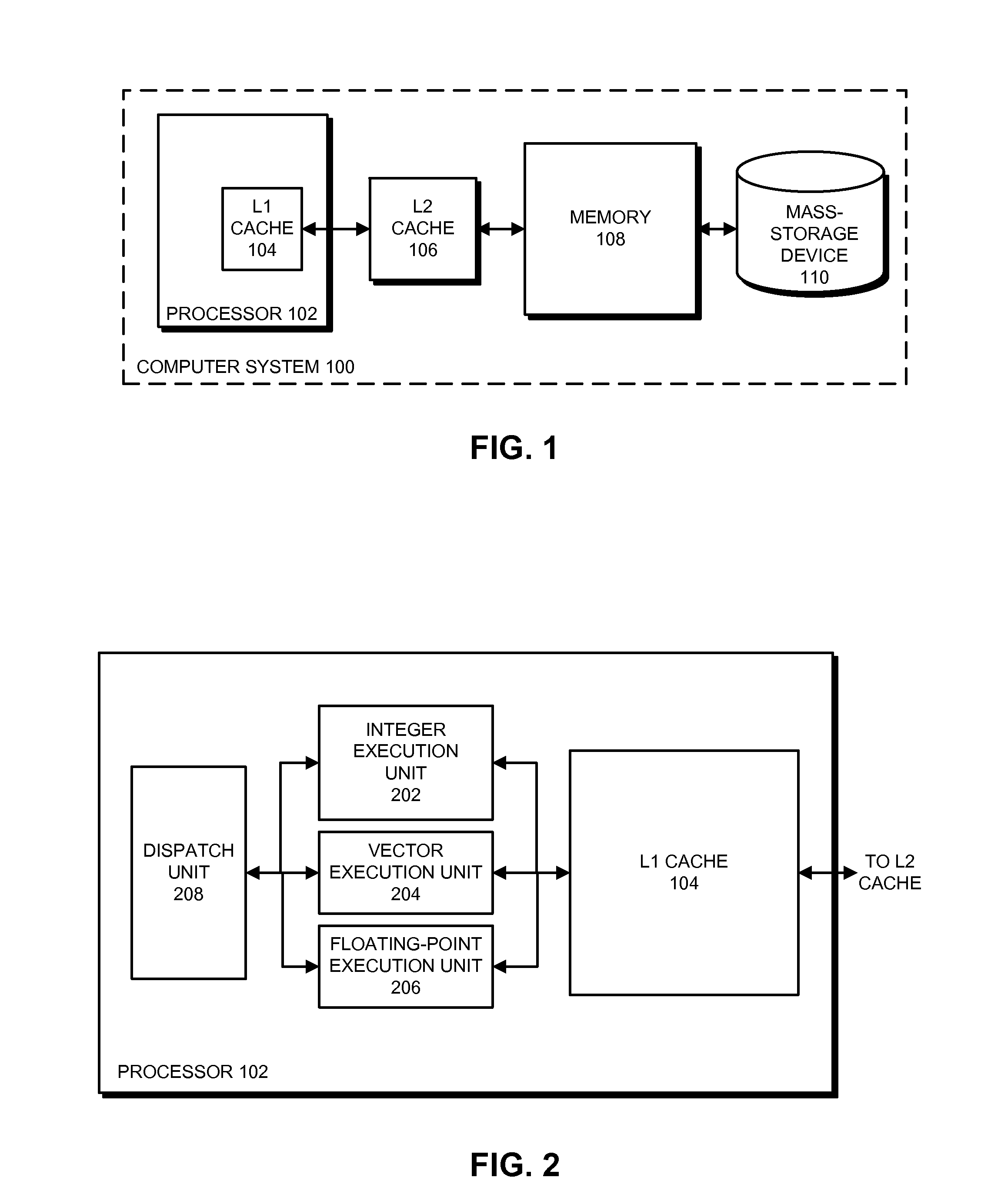Predicting a result for an actual instruction when processing vector instructions
a vector instruction and result technology, applied in the field of computer system performance improvement techniques, can solve problems such as the inability to achieve vector loop vectorization in program code, the inability of tlp and dlp processors to gain widespread adoption for general-purpose applications, and the process that requires extensive effor
- Summary
- Abstract
- Description
- Claims
- Application Information
AI Technical Summary
Benefits of technology
Problems solved by technology
Method used
Image
Examples
examples
[0072]˜p0; a=Actual(b);[0073]On Entry: FSR={0 0 0 0 0 1 0 0}[0074]p0={0 1 1 1 1 1 1 0}[0075]a={9 9 9 9 9 9 9 9}[0076]b={0 1 0 1 1 1 0 0}[0077]On Exit: a={91011009}[0078]FSR={0 0 0 0 0 0 0 0}[0079]!p0; a=Actual (b);[0080]On Entry: FSR={0 0 0 0 0 1 0 0}[0081]p0={0 1 1 1 1 1 1 0}[0082]a={9 9 9 9 9 9 9 9}[0083]b={0 1 0 1 1 1 0 0}[0084]On Exit: a={0 1 0 1 1 0 0 0}[0085]FSR={0 0 0 0 0 0 0 0}
Computer System
[0086]FIG. 1 presents a block diagram of a computer system 100 in accordance with the described embodiments. Computer system 100 includes processor 102, L2 cache 106, memory 108, and mass-storage device 110. Processor 102 includes L1 cache 104.
[0087]Processor 102 can be a general-purpose processor that performs computational operations. For example, processor 102 can be a central processing unit (CPU) such as a microprocessor, a controller, an application-specific integrated circuit (ASIC), or a field-programmable gate array (FPGA). In the described embodiments, processor 102 has one or ...
PUM
 Login to View More
Login to View More Abstract
Description
Claims
Application Information
 Login to View More
Login to View More - R&D
- Intellectual Property
- Life Sciences
- Materials
- Tech Scout
- Unparalleled Data Quality
- Higher Quality Content
- 60% Fewer Hallucinations
Browse by: Latest US Patents, China's latest patents, Technical Efficacy Thesaurus, Application Domain, Technology Topic, Popular Technical Reports.
© 2025 PatSnap. All rights reserved.Legal|Privacy policy|Modern Slavery Act Transparency Statement|Sitemap|About US| Contact US: help@patsnap.com



